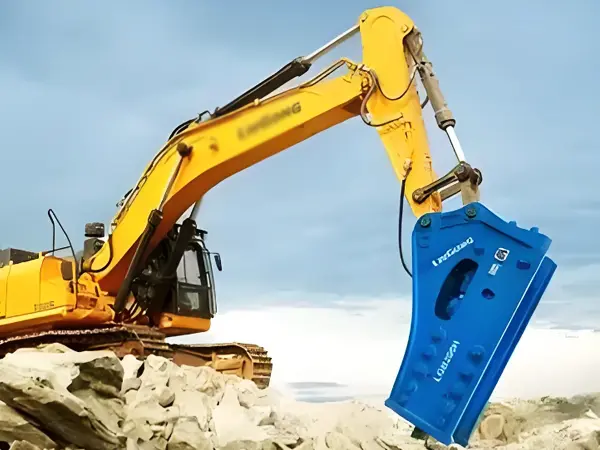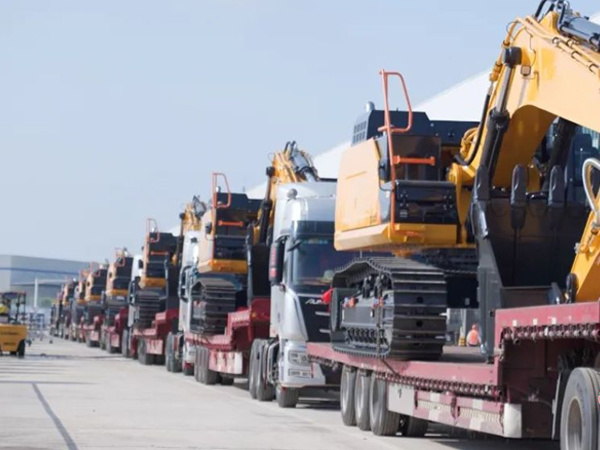The Best Practices for Installing Mini Excavator Hydraulic Cylinders: A Comprehensive Guide
Release time:
2025-06-05
The Best Practices for Installing Mini Excavator Hydraulic Cylinders Installing hydraulic cylinders in mini excavators is a crucial task that demands precision and attention to detail. Proper installation ensures optimal performance, longevity, and safety of your machinery. In this comprehensive guide, we will explore the best practices for installing mini excavator hydraulic cylinders, providing
The Best Practices for Installing Mini Excavator Hydraulic Cylinders
Installing hydraulic cylinders in mini excavators is a crucial task that demands precision and attention to detail. Proper installation ensures optimal performance, longevity, and safety of your machinery. In this comprehensive guide, we will explore the best practices for installing mini excavator hydraulic cylinders, providing you with detailed insights and actionable tips.
Table of Contents
- 1. Understanding Hydraulic Systems in Mini Excavators
- 2. Importance of Hydraulic Cylinders
- 3. Pre-Installation Checks
- 4. Step-by-Step Installation Process
- 5. Post-Installation Tips
- 6. Troubleshooting Common Issues
- 7. Maintaining Hydraulic Cylinders
- 8. Conclusion
- 9. Frequently Asked Questions
1. Understanding Hydraulic Systems in Mini Excavators
Hydraulic systems are the backbone of mini excavators, powering critical components such as the boom, arm, and bucket. These systems utilize hydraulic fluid to transmit force and motion, making them highly efficient for heavy lifting and digging tasks. Understanding the fundamental principles of hydraulic systems is essential for anyone involved in the maintenance and installation of hydraulic cylinders.
2. Importance of Hydraulic Cylinders
Hydraulic cylinders are pivotal in converting hydraulic energy into mechanical energy. They act as the muscle of the mini excavator, providing the force needed for various operations. Properly functioning hydraulic cylinders improve performance, enhance safety, and reduce the likelihood of equipment failure.
3. Pre-Installation Checks
Before embarking on the installation of hydraulic cylinders, thorough pre-installation checks are essential. This phase ensures that all components are in optimal condition and ready for installation.
3.1 Safety First
Always prioritize safety by wearing appropriate personal protective equipment (PPE), including gloves, safety glasses, and steel-toed boots. Ensure that the work area is clear of hazards.
3.2 Inspect the Equipment
Conduct a detailed inspection of the mini excavator and surrounding components. Check for leaks, corrosion, or any signs of damage. It’s crucial to ensure that the hydraulic system is free of debris and contaminants.
3.3 Gather Necessary Tools and Materials
Ensure you have all the required tools and replacement parts at your disposal. Common tools include wrenches, pliers, a hydraulic jack, and a torque wrench. Having everything ready will streamline the installation process.
4. Step-by-Step Installation Process
The installation process requires methodical steps to ensure success. Below is a detailed guide to help you navigate through the installation of hydraulic cylinders.
4.1 Removing Old Cylinders
Before you can install new hydraulic cylinders, you must safely remove the old ones.
1. **Depressurize the System**: Shut off the engine and relieve any pressure in the hydraulic system by operating the controls to extend the cylinders fully.
2. **Disconnect Hydraulic Lines**: Using appropriate tools, carefully disconnect the hydraulic lines from the old cylinders. Be prepared for any residual fluid to escape.
3. **Unbolt the Old Cylinders**: Remove any bolts securing the old cylinders in place. Keep these bolts, as you may need them for the new installation.
4. **Remove the Cylinders**: Carefully extract the old hydraulic cylinders from their mounts, ensuring not to damage any surrounding components.
4.2 Preparing New Cylinders
Now that you’ve removed the old cylinders, it’s time to prepare the new ones for installation.
1. **Inspect New Cylinders**: Examine the new hydraulic cylinders for any visible defects. Check seals, rods, and ports to ensure they are in perfect condition.
2. **Lubricate the Seals**: Before installation, lubricate the seals with a small amount of hydraulic fluid. This helps in proper sealing and reduces wear during operation.
3. **Align Cylinder Mounts**: Ensure that the mounting points on the new cylinders align perfectly with the excavator’s attachment points.
4.3 Installing New Cylinders
With the new cylinders prepared, you can now proceed with the installation.
1. **Position the New Cylinders**: Carefully position the new hydraulic cylinders into their designated mounts.
2. **Secure the Cylinders**: Using the original bolts, securely fasten the cylinders in place. Ensure that you follow the manufacturer’s torque specifications for optimal tightness.
3. **Reconnect Hydraulic Lines**: Reconnect the hydraulic lines to the new cylinders. Ensure that all connections are tight and that there are no kinks in the hoses.
4. **Check for Proper Alignment**: Double-check the alignment of the hydraulic cylinders and ensure everything is in place before proceeding.
5. Post-Installation Tips
After successfully installing the hydraulic cylinders, there are several crucial post-installation steps to take.
5.1 Test the System
Start the mini excavator and let it run for a few minutes to allow the hydraulic fluid to circulate. Test the cylinders by operating the controls to ensure they function smoothly.
5.2 Check for Leaks
Inspect the hydraulic lines and connections for any signs of leaks. If you notice any fluid escaping, address the issue immediately to prevent further complications.
5.3 Monitor Performance
Regularly check the performance of the new hydraulic cylinders in the days following installation. Keep an eye on any unusual noises, vibrations, or performance issues, as these may indicate a problem.
6. Troubleshooting Common Issues
Despite following best practices, issues may still arise during or after the installation of hydraulic cylinders. Here are common troubleshooting tips:
6.1 Cylinder Drift
If the hydraulic cylinder drifts or does not hold position, check for fluid leaks and ensure that the seals are functioning correctly.
6.2 Slow Operation
Slow movement may indicate low hydraulic fluid levels or air trapped in the system. Ensure the fluid is at the proper level and bleed any air from the hydraulic system.
6.3 Unusual Noises
Any hissing or grinding noises may indicate damage or wear in the hydraulic system. Inspect all components thoroughly and replace any damaged parts.
7. Maintaining Hydraulic Cylinders
Proper maintenance of hydraulic cylinders is essential to ensure their longevity and optimal performance.
7.1 Regular Inspections
Conduct routine inspections of the hydraulic cylinders for any signs of wear, leaks, or damage. Early detection of issues can prevent costly repairs down the line.
7.2 Fluid Quality Checks
Regularly check the quality of the hydraulic fluid. Contaminated or degraded fluid can lead to damage and reduced efficiency.
7.3 Seal Maintenance
Inspect and, if necessary, replace seals periodically. This will help maintain a proper seal and prevent leaks from occurring.
8. Conclusion
Installing hydraulic cylinders in mini excavators is a critical task that requires diligence and expertise. By following the best practices outlined in this guide, you can ensure a successful installation and maintain the efficiency and longevity of your machinery. Regular inspections, proper maintenance, and attention to detail will help you keep your mini excavator in peak operating condition.
9. Frequently Asked Questions
1. What tools do I need for installing hydraulic cylinders?
You will typically need wrenches, pliers, a hydraulic jack, and a torque wrench to complete the installation.
2. How do I know if my hydraulic cylinder needs replacement?
Signs of wear, leaks, or reduced performance are indicators that your hydraulic cylinder may need replacement.
3. Can I install hydraulic cylinders myself?
Yes, if you have the necessary tools and skills, you can install hydraulic cylinders. However, consulting a professional is advisable for complex tasks.
4. What should I do if I experience hydraulic fluid leaks?
Identify the source of the leak, tighten connections, and replace any damaged seals or hoses.
5. How often should I maintain my hydraulic cylinders?
Regular maintenance should be performed every few months or after significant usage to ensure optimal performance.
By following the guidelines and best practices detailed in this article, you will be well-equipped to handle the installation and maintenance of hydraulic cylinders in mini excavators effectively.





